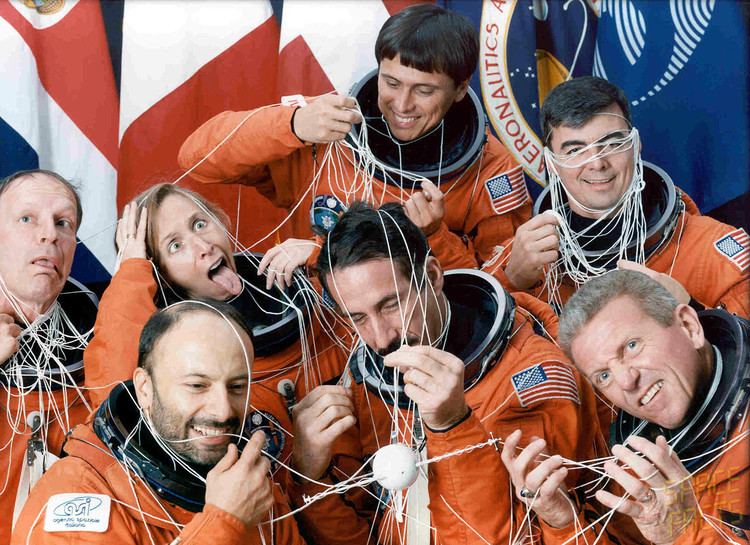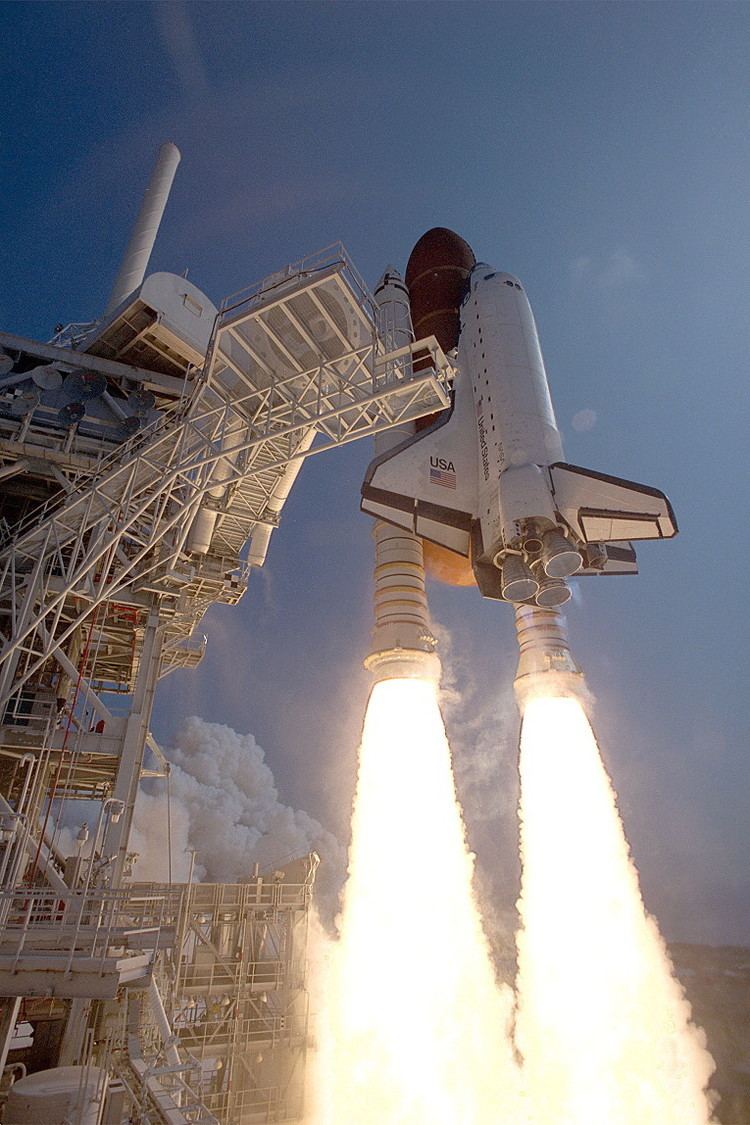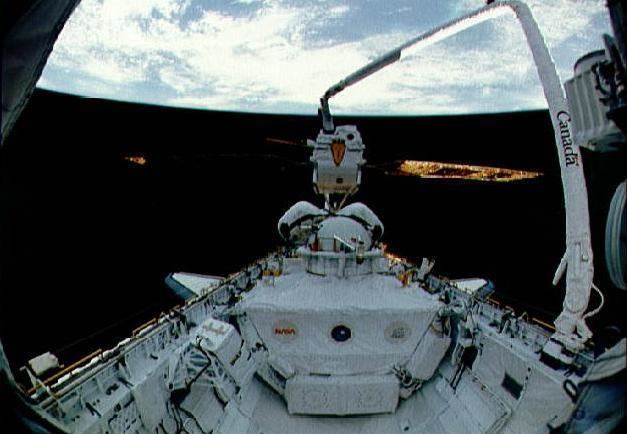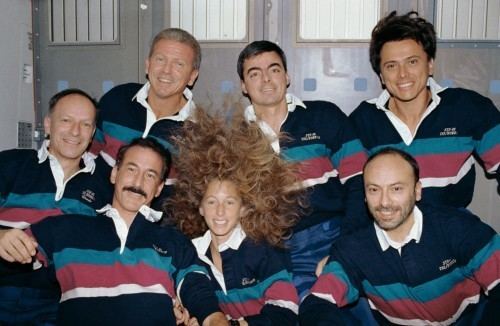COSPAR ID 1992-049A Orbits completed 127 Apogee 437,000 m Dates 31 Jul 1992 – 8 Aug 1992 | SATCAT no. 22064 Period 1.6 hours Launch date 31 July 1992 Landing date 8 August 1992 | |
 | ||
Mission type Satellite deploymentTechnology Mission duration 7 days, 23 hours, 15 minutes, 3 seconds Distance travelled 5,344,643 kilometres (3,321,007 mi) Members | ||
STS-46 was a NASA Space Shuttle mission using Space Shuttle Atlantis and was launched on 31 July 1992 at 9:56:48 am EDT.

Mission highlights

The mission's primary objectives were the deployment of the European Space Agency's EURECA (European Retrievable Carrier) and the joint NASA/Italian Space Agency Tethered Satellite System (TSS). EURECA was deployed a day later than scheduled because of a problem with its data handling system. Seven and a half hours after deployment, the spacecraft's thrusters were fired to boost EURECA to its planned operating altitude of around 310 miles. However, thruster firing was cut to six minutes from 24 minutes because of unexpected attitude data from the spacecraft. The problem was resolved, and EURECA was successfully boosted to its operational orbit on the mission's sixth day. TSS deployment also was delayed one day because of the problems with EURECA. During deployment, the satellite reached a maximum distance of only 860 feet from the orbiter instead of the planned 12.5 miles because of a jammed tether line. After numerous attempts over several days to free the tether, TSS operations were curtailed, and the satellite was stowed for return to Earth. It would be reflown in 1996 on STS-75.

Secondary payloads included the Evaluation of Oxygen Integration with Materials/Thermal Management Processes (EOIM-III/TEMP 2A), Consortium for Materials Development in Space Complex Autonomous Payload (CONCAP II and CONCAP III), IMAX Cargo Bay Camera (ICBC), Limited Duration Space Environment Candidate Materials Exposure (LDCE), Air Force Maui Optical Site (AMOS), Pituitary Growth Hormone Cell Function (PHCF), and the Ultraviolet Plume Instrument (UVPI). The mission was extended by a day in order to complete scientific objectives.
STS-46 marked the 150th human spaceflight to achieve orbit.


